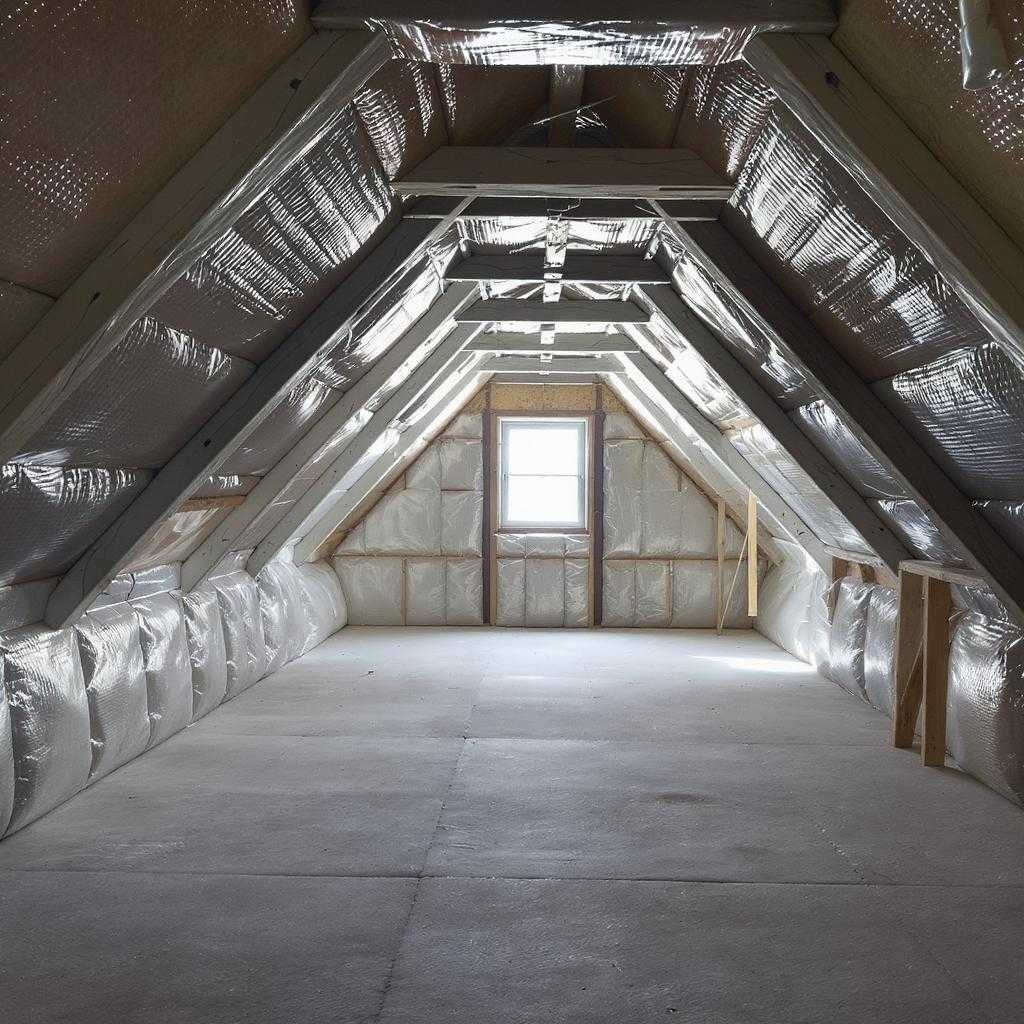A properly insulated attic can drastically cut your energy bills while keeping your home more comfortable year-round. If you’ve been putting off this upgrade, now is the time to explore smarter, more affordable insulation options.

Why Attic Insulation Matters More Than You Think
Many homeowners underestimate how much their attic affects overall energy efficiency. A poorly insulated attic allows heat to escape in winter and flood in during summer, placing unnecessary strain on HVAC systems. Proper insulation not only reduces monthly energy bills but also enhances indoor comfort, extends roof life, and increases home value. In fact, the U.S. Environmental Protection Agency estimates that homeowners can save up to 15% on heating and cooling by properly insulating and sealing their home, particularly the attic.
For homes in Columbus, where seasonal extremes can impact indoor climate, attic insulation is not a luxury—it’s a necessity.
Signs Your Attic Insulation Needs an Upgrade
Your attic insulation may be outdated or insufficient if you notice the following:
- Uneven room temperatures across the house
- Unusually high heating or cooling bills
- Drafts or cold air coming through ceilings
- Ice dams forming on the roof in winter
- Visible gaps or thin coverage in existing insulation
If any of these apply, it’s time to inspect the attic and consider insulation upgrades.
Types of Attic Insulation: Pros and Cons
Different homes require different insulation solutions. Here’s a breakdown of the most effective types:
- Fiberglass Batt Insulation – Inexpensive and widely available, easy to install but requires precise fitting.
- Blown-In Cellulose – Great for adding insulation to existing attics; fills gaps well, though it can settle over time.
- Spray Foam – Offers both insulation and air sealing in one application; excellent performance but higher cost.
- Radiant Barrier – Reflects radiant heat; useful in hot climates, but should be combined with other forms of insulation.
For a comprehensive comparison, see The 7 Best Kinds Of Insulation For Attics.
How Much Insulation Do You Actually Need?
The required amount of insulation is measured by R-value, which indicates resistance to heat flow. The higher the R-value, the better the performance. Most homes in the U.S. need attic insulation rated between R-38 and R-60. You can calculate your needs by considering your existing insulation and local climate zone.
Check out this tool from the Insulation Institute: How Much Attic Insulation Do I Need?
What a Properly Insulated Attic Should Look Like
A well-insulated attic has complete, even coverage of the appropriate insulation type. Gaps, compressed sections, or uncovered areas drastically reduce efficiency. Air sealing is also critical—insulation works best when combined with a properly sealed attic space.
ENERGY STAR offers excellent visual guidance on this topic. Visit Well-Insulated and Sealed Attic for reference photos and standards.
How Much Does Attic Insulation Cost?
Prices vary based on insulation type, attic size, and labor. Here’s a general breakdown of cost per square foot:
- Fiberglass batts: $0.30 - $1.50
- Blown-in cellulose: $0.60 - $1.80
- Spray foam: $1.00 - $3.50
For a detailed cost calculator and service comparison, see Attic Insulation Cost per Square Foot.
If insulation prices in Columbus seem steep, consider exploring unsold inventory or seasonal discounts offered by local suppliers. Many homeowners are surprised to find that “unsold insulation deals” are available if you know where to look.
DIY or Hire a Professional?
Installing attic insulation is a project many DIYers can handle, especially with batt or blown-in types. However, for best results, especially in irregular spaces or when using spray foam, professional installation ensures safety and effectiveness.
ENERGY STAR outlines the process well in their guide: Attic Insulation Project
Where to Buy Attic Insulation and Accessories
Home improvement retailers offer a wide range of insulation materials and tools:
Buying in bulk or during off-peak seasons can help secure better pricing. Homeowners should also check for energy efficiency rebates offered through local utility companies or government programs, which can reduce upfront investment.
What to Do Instead of Overpaying
Many homeowners assume attic insulation must be expensive. The truth is, options like recycled materials, hybrid installations (professional + DIY), and shopping discounted insulation deals can drastically lower costs. Say farewell to expensive attic insulation by:
- Getting multiple estimates before hiring an installer
- Looking into local rebate programs
- Combining air sealing with insulation to maximize returns
- Prioritizing insulation over HVAC upgrades—it saves more long term
In Columbus, homeowners can find seasonal discounts, warehouse overstock, and rebate-backed installation offers if they plan carefully.
Final Tips for a Comfortable, Energy-Efficient Home
Attic insulation is one of the smartest home investments you can make. It reduces utility costs, increases resale value, and improves year-round comfort. To summarize:
- Evaluate your existing insulation for age and performance
- Understand which insulation type fits your attic’s design
- Shop around for both materials and professional installers
- Take advantage of local incentives and available discounts
For homeowners in Columbus, proper attic insulation is the key to cutting costs without compromising comfort. The right insulation strategy helps avoid energy waste, reduce carbon footprints, and make your home more livable season after season.




